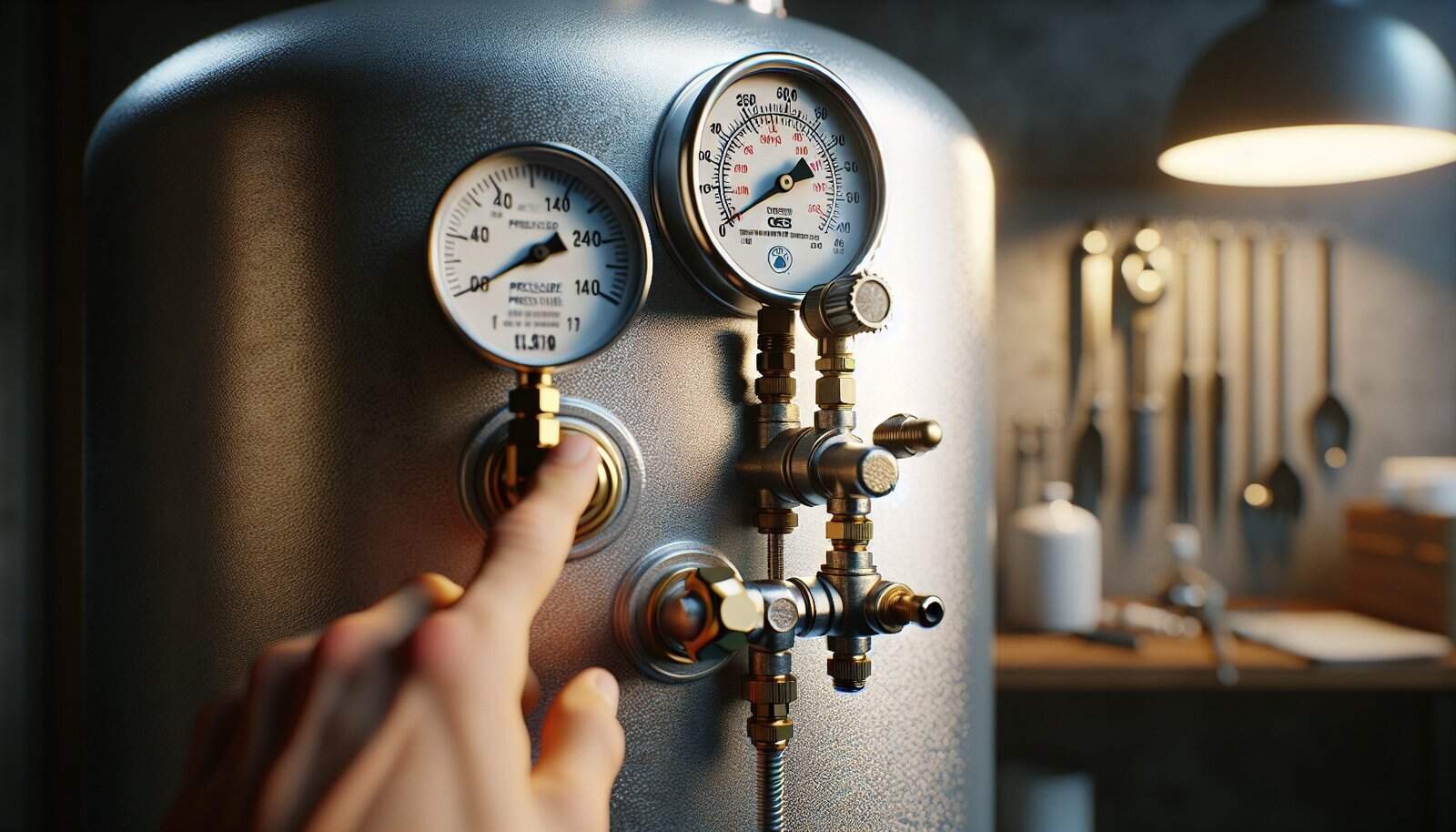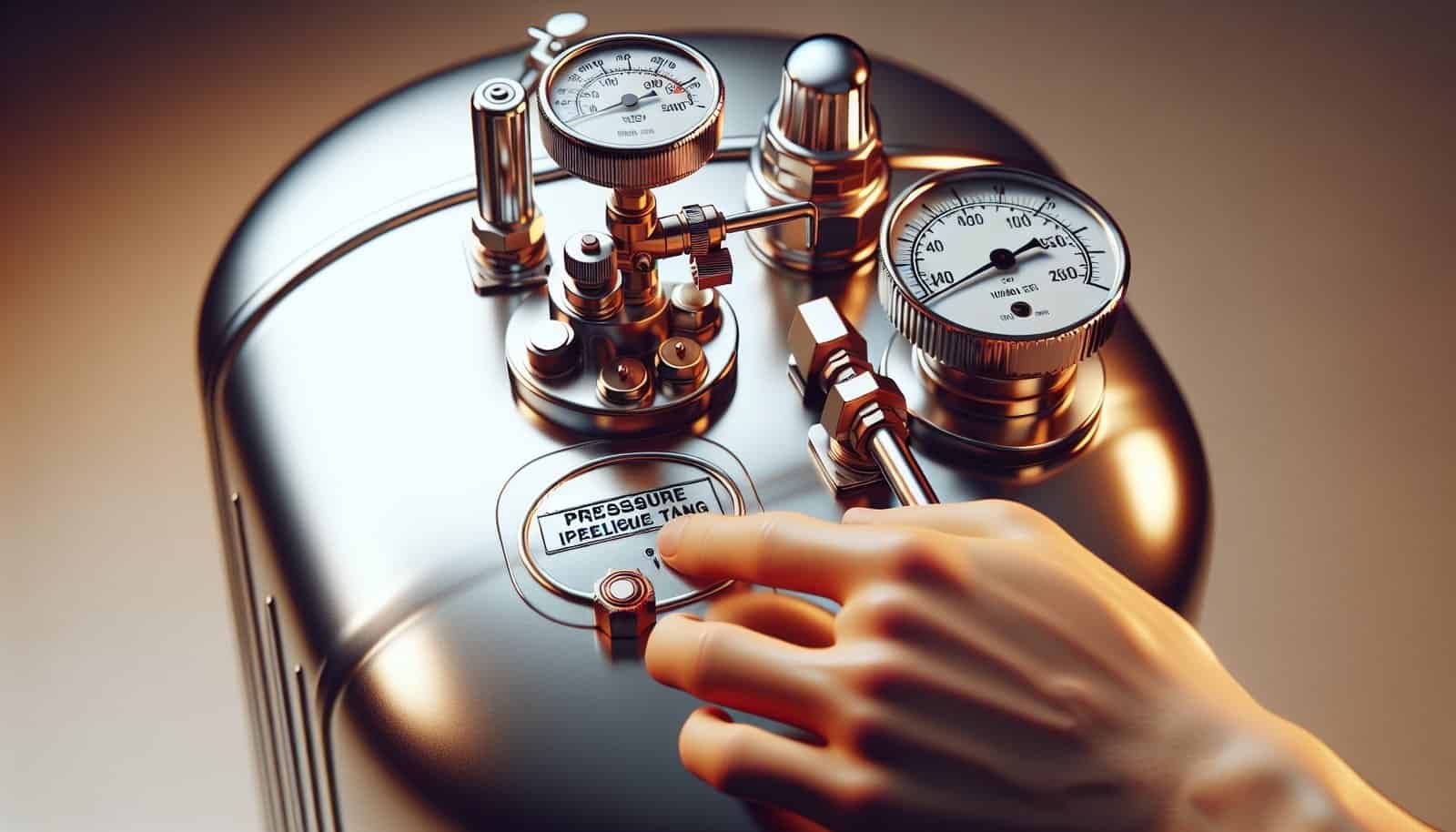? Do you know whether your pressure tank is safe to use right now?
Introduction
You rely on your pressure tank to maintain steady water pressure, protect your pump from short cycling, and store water for immediate use. Knowing if your pressure tank is safe prevents costly equipment failure, water damage, or — in rare cases — hazardous ruptures. This article walks you through how to determine safety, what to inspect, how to test components, and when to call a professional.
What is a pressure tank?
A pressure tank stores water under air pressure so your water system can deliver water on demand without the pump running constantly. It smooths pressure changes, extends pump life, and maintains a buffer so short taps don’t trigger the pump repeatedly. Understanding its basic function helps you recognize when something isn’t right.
Main components of a pressure tank
Most tanks have a shell, internal bladder or diaphragm (on bladder/diaphragm tanks), an air valve (Schrader valve) for adding or measuring air pressure, inlet and outlet connections, and often a pressure gauge and pressure relief valve. Familiarize yourself with each component before you begin inspections.
Why tank safety matters
A failing pressure tank can lead to persistent low or fluctuating water pressure, pump short-cycling, higher energy costs, water contamination, water leaks, or in extreme cases structural failure of the tank. Taking time to check safety reduces repair costs and keeps your water system reliable.

Common types of pressure tanks
Knowing the type of tank you have determines inspection and maintenance steps.
Bladder tanks
These tanks have a rubber bladder that separates water from the air chamber. The bladder prevents waterlogging. If the bladder fails, you’ll typically find water in the air side and hear sloshing.
Diaphragm tanks
Similar to bladder tanks but with a diaphragm that does the same separating job. The inspection and precharge checks are essentially the same as for bladder tanks.
Non-bladder (air-over-water or steel) tanks
Older or more basic tanks store air and water in a common space. These are prone to air loss and waterlogging over time and typically require recharging air manually. They also tend to corrode internally faster.
Signs your pressure tank might be unsafe
Recognizing early symptoms prevents escalation. Look for:
- Rapid pump cycling (short cycling)
- Low or inconsistent water pressure
- Visible leaks or puddles near the tank
- Bulging, unusual sounds (popping, hissing), or visible corrosion
- Pressure gauge reading instability or failure to hold pressure
- Water in the air valve or air escaping when you check the Schrader valve
- Pressure relief valve discharge or corrosion
Quick reference: symptom, likely cause, immediate action
| Symptom | Likely cause | Immediate action |
|---|---|---|
| Pump turns on/off rapidly | Low air charge or waterlogged tank | Turn off pump power; check tank air charge |
| Low steady pressure | Incorrect precharge or pump issue | Check pressure gauge and precharge |
| Water around base or fittings | Leak | Shut off pump/power; isolate tank; repair or replace |
| Bulging or cracked shell | Structural failure | Evacuate area; shut off power and water; contact professional |
| Hissing from valve or seam | Air leak | Turn off pump; tighten or replace fittings; test air valve |
| Water from pressure relief valve | Overpressure or failed valve | Shut off pump; relieve system; replace valve if needed |

Tools and supplies you’ll need
Gather a few simple tools before you inspect or test:
- Tire pressure gauge or digital air pressure gauge (0–100+ psi)
- Hand pump or small air compressor (for adding air)
- Adjustable wrench and screwdrivers
- Bucket and towels for draining
- Safety glasses and work gloves
- Marker and notepad for recording readings
- Pump switch manufacturer instructions (if available)
Safety precautions before you inspect
Always prioritize safety:
- Turn off electrical power to the pump at the breaker box or pump switch. Never work on pressurized systems with the pump energized.
- Close the well or inlet valve if you can isolate the tank from water source.
- Open a faucet to relieve pressure in the lines before disconnecting anything.
- Use gloves and eye protection when manipulating fittings or handling pressurized valves.
- If you suspect structural failure (deep rust, bulging shell, visible cracks), stay clear and call a professional.
Visual inspection: step-by-step
A thorough visual inspection is your first line of defense. Walk around the tank and check:
Exterior shell and fittings
Look for rust, dents, bulges, or cracked paint. Pay attention to seams and welded areas. Any bulge or seam separation indicates imminent failure and requires you to shut the system down and contact a professional.
Piping and connections
Inspect inlet/outlet fittings for leaks, corrosion, or loose bolts. Tighten minor leaks if you’re comfortable, but significant leaks or broken fittings should be addressed by a professional.
Base and mounting
Check that the tank sits level and on a stable base. Vibrations can stress connections over time.
Pressure gauge and relief valve
Ensure the pressure gauge works and that the pressure relief valve (if present) is not corroded or leaking. Test the relief valve carefully while standing back.

Checking the air charge (precharge)
The precharge is the air pressure in the tank with no water in the tank. It should typically be set to 2 psi below your pump’s cut-in pressure for bladder and diaphragm tanks.
Why precharge matters
Correct precharge ensures the tank accepts and stores the proper water volume and stops the pump at the right times. Incorrect air charge causes short cycling or insufficient drawdown.
Procedure to measure and adjust precharge
- Turn off power to the pump at the breaker.
- Open a faucet to depressurize the system and allow the pump to stop.
- Drain the tank to below the air valve (open a nearby tap until the pump does not come on and pressure drops below cut-in).
- Remove the protective cap from the tank’s Schrader (air) valve.
- Use a reliable tire pressure gauge to read the air pressure. That reading is the precharge if the tank is fully drained of water.
- Compare the reading to the target precharge (2 psi below cut-in). Common systems: for a 30/50 switch, precharge 28 psi; for 40/60, precharge 38 psi.
- If low, add air with a hand pump or compressor in short bursts, checking frequently. If overcharged, use the Schrader valve to bleed air until you reach the target.
- Replace the protective cap and restore power.
Table: common pressure switch settings and precharge
| Pressure switch setting | Typical precharge (empty tank) |
|---|---|
| 20/40 | 18 psi |
| 30/50 | 28 psi |
| 40/60 | 38 psi |
| Custom settings | 2 psi below cut-in |
Notes and cautions
- For non-bladder air-over-water tanks, it’s harder to set and maintain precharge since air can dissolve and escape. If you have a non-bladder tank and struggle to maintain air, consult a pro.
- Never attempt to add more air than the tank’s maximum working pressure. Check the tank label for maximum allowed pressure.
Testing for waterlogging
Waterlogging happens when the air cushion is lost, and the tank holds mostly water. You’ll notice shorter pump cycles and choppy pressure.
How to test
- Turn off pump power, open a faucet until the system pressure is well below cut-in, and place your ear against the tank: a full tank will sound solid; a waterlogged tank will slosh.
- On bladder or diaphragm tanks, press the air valve briefly — if water squirts out, the bladder has failed.
- Measure precharge as described; if the precharge reads zero or a very low value even after adding air, bladder integrity may be compromised.
How to fix waterlogging
- For bladder/diaphragm tanks with failed bladder, replacement of the bladder or the entire tank is often required.
- For non-bladder tanks, you can attempt to draw down the tank completely and then refill and recharge air. Long-term, converting to a bladder tank is often recommended.
Pressure relief valve (PRV) inspection and testing
The PRV protects against hazardous overpressure. It should never be leaking or corroded.
How to test the PRV
- Put a bucket under the discharge pipe or outlet.
- Pull the test lever briefly. The valve should discharge water then stop when you release the lever.
- If it leaks continuously or fails to seat, replace it immediately.
When to replace
If the valve is corroded, stuck, leaks continuously, or if you see mineral buildup that prevents tight seating, replace the valve. Don’t plug or disable a faulty relief valve.

Pressure switch and gauge testing
The pressure switch controls pump on/off and must be set correctly.
How to check the pressure switch
- After restoring power and ensuring proper precharge, watch pump behavior as you open and close faucets. Note the cut-in and cut-out points on the gauge.
- If the switch is worn or contacts are pitted, you may see inconsistent cut-in/out or the pump may run but pressure doesn’t build. Replace the switch if it’s erratic.
Adjusting the switch
Follow manufacturer directions; most switches have two nuts for cut-in/out adjustments. Small adjustments change the differential. If you’re not comfortable, hire a technician since incorrect adjustments can damage the pump.
What to do if you find a leak or structural problem
If you detect a leak at a threaded fitting or flange:
- Turn off power to the pump.
- Isolate and drain the tank or section.
- Tighten the fitting; if it still leaks, replace the seal or fitting. If the steel tank shell is corroded, dented, or bulging:
- Shut down the system immediately and replace the tank. A corroded shell is a structural hazard.
Corrosion and sacrificial anode considerations
Some tanks and associated water heaters use sacrificial anodes. Check adjacent equipment and piping for signs of electrochemical corrosion. If your tank is internally corroded or you see rust at welds, consult a professional for options.

Manufacturer guidance and labeling
Check the tank label for model, serial number, working pressure, and maintenance recommendations. Follow manufacturer-specified precharge values and procedures. If the label is missing or illegible, search the model online or call the manufacturer.
Maintenance schedule suggestions
Regular maintenance preserves safety and function. Here’s a suggested schedule:
| Interval | Task |
|---|---|
| Monthly | Visual check for leaks, observe pump cycles, listen for unusual sounds |
| Every 3 months | Check pressure gauge readings and listen for sloshing |
| Every 6 months | Measure and adjust precharge for bladder tanks; inspect PRV |
| Annually | Full system inspection: fittings, valves, paint/rust, pressure switch, and documentation |
| Every 3–10 years | Consider tank replacement depending on age and condition (see lifespan below) |
Lifespan and replacement considerations
A well-maintained bladder or diaphragm tank often lasts 8–15 years. Non-bladder tanks and tanks exposed to corrosive water will have shorter lives. Replace the tank if:
- Bladder or diaphragm fails
- Tank shell shows significant corrosion
- Repair costs approach replacement cost
- Tank is older than the expected lifespan and signs of wear exist
Cost considerations
Replacement costs vary widely by capacity and type. A small residential bladder tank might cost a few hundred dollars; larger tanks and professional installation increase the price. Factor in labor, pressure switch adjustments, and possible piping upgrades.
When to hire a professional
You should call a licensed plumber or pump technician if:
- You see structural damage or bulging
- You can’t find or fix a leak
- The tank’s precharge cannot be maintained
- You’re uncomfortable working with pressurized components or electricity
- The pump is short cycling after you’ve tried basic fixes
A pro can also test pump amperage, replace switch components, and safely remove and replace a pressurized tank.
Legal, codes, and safety standards
Residential pressure tanks are subject to local plumbing codes and sometimes to standards such as ASME for pressure vessels. Always follow local regulations for installation and replacement. If your system ties to public water or has health implications, consult building codes and local health authorities.
Troubleshooting: common problems and solutions
| Problem | Likely cause | Action |
|---|---|---|
| Pump short cycles | Low precharge or small tank | Check and correct precharge; consider larger tank |
| No water or low pressure | Pump failure, clogged intake, faulty switch | Check pump power, check filter/strainer, call tech if needed |
| Constant water leakage | Loose fittings, broken pipe, tank seam leak | Isolate and repair/replace affected components |
| Air hissing from valve | Schrader valve leak or loose cap | Tighten or replace cap; replace valve core if needed |
| Pressure gauge stuck | Faulty gauge | Replace gauge |
| Frequent PRV discharge | Overpressure or stuck valve | Check pressure switch settings; replace stuck PRV |
Recordkeeping and tracking
Keep a maintenance log with dates of inspections, precharge readings, any repairs, part numbers, and technician notes. This record helps you spot trends and makes warranty claims easier.
FAQs
How often should you check the tank pressure?
Check the precharge at least twice a year for peace of mind; quarterly checks are better if you notice issues.
Can you reuse a bladder tank if the bladder fails?
You can sometimes replace just the bladder, but often replacement cost and labor make replacing the entire tank more practical.
Is it dangerous to work on a pressurized tank?
Yes. Always shut off power and depressurize the system before working. If you’re unsure, call a professional.
What if the tank loses air rapidly after charging?
A rapid air loss usually indicates a failed bladder or a leaking Schrader valve. If replacing the valve doesn’t help, expect a bladder failure.
Can a tank explode?
Modern tanks with working PRVs and proper maintenance are highly unlikely to explode. However, a severely corroded shell or blocked relief valve can cause an unsafe situation. That’s why immediate action is required if you detect bulging, severe rust, or structural damage.
Final checklist before you finish an inspection
- Power to pump is shut off during work
- System pressure relieved before touching fittings or valves
- Precharge measured and adjusted to 2 psi below cut-in
- No water escaping from air valve
- No visible rust, bulging, or severe corrosion on the shell
- Pressure relief valve tests properly
- Pressure switch operates within expected cut-in/cut-out range
- You logged readings and noted any recommended repairs
Conclusion
You can determine whether your pressure tank is safe by performing a systematic visual inspection, checking precharge, testing the relief valve, and monitoring pump behavior. Regular maintenance, quick response to leaks or unusual sounds, and keeping records will keep your system healthy and safe. If you encounter structural damage, persistent air loss, or anything beyond basic maintenance, turn off the system and call a qualified technician. Your safety and your water system’s reliability are worth the time.
